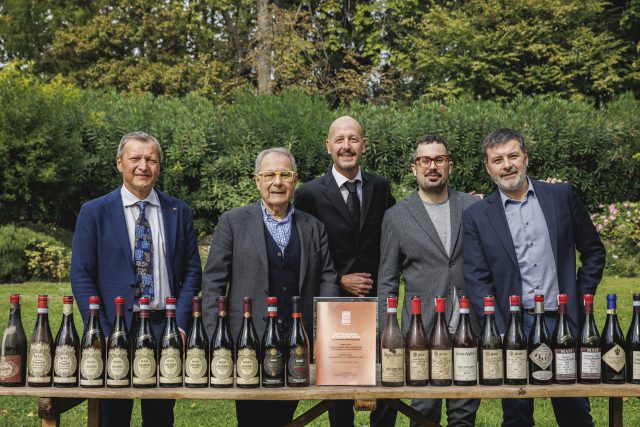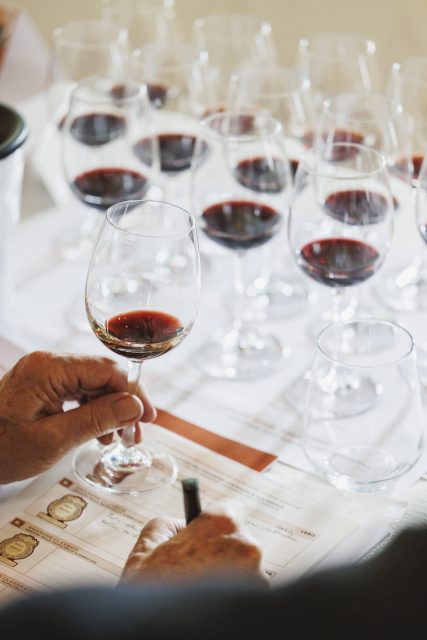This website uses cookies so that we can provide you with the best user experience possible. Cookie information is stored in your browser and performs functions such as recognising you when you return to our website and helping our team to understand which sections of the website you find most interesting and useful.
Masi 250: Seven decades of Amarone Classico
As part of the celebrations for Masi’s 250th anniversary, journalists from around the world were treated to a vertical tasting of 13 vintages of Amarone, stretching from 1958 to 2015.

With each participant given a cardboard sign indicating their name and country of origin, the event felt more akin to a United Nations meeting than a tasting, with representatives from the US, Europe and Japan present.
Addressing the assembled tasters, Masi Agricola president Sandro Boscaini said: “I am very emotional regarding this anniversary – 250 years is not something you can celebrate every year.”
“We were forced in the decades of the last century to become experts in Amarone…It [Amarone] was there to be taken like a baby and cultivated into an icon of this area,” Boscaini continued. “Taste the wine as representative of one cultural approach over 70 years.”
Beginning with the 1958, an intense, complex wine that, despite its years, retains some freshness to balance out the aromas of dried fig, raisin and clove. “’58 was the wine made for the pleasure of the producer,” Boscaini explains, “there was only a local market for the wine.” According to Boscaini, his father, who ran Masi until 1978, made Amarone “for cultural rather than market reasons”.
By contrast, the 1962 vintage, which, when tasted in 1985 showed “good roundness with complex aromas on ripe tones” tasted far more advanced, with an almost lacquer-like quality on the nose and very little hint of any remaining primary aroma.
Moving into the 70s with the 1974 vintage, Boscaini suggested that it was evocative of the “social confusion” of the Years of Lead (a period of political terrorism from far-left and far-right groups). “In the wines you can detect this problematic situation.” This vintage was also marked by difficult conditions during the drying period, as high relative humidity and frequent fog in the valley and foothills disrupted the appassimento progress, though grapes dried at higher altitude fared better. No vintage in this decade was judged to be “exceptional”, and the 1980 vintage, also tasted, is considered to be part of this heavier style.
The 80s saw greater emphasis on fruit aroma and intensity. 1983, when Lanfranco Paronetto’s ideas of using biotechnology to shorten fermentation were applied, is described by Boscaini as the first vintage “made in a proper way”.
“With the ’97 you really detect the modern style of Amarone,”argued Boscaini. That style being less about “super-structured” wines and more focused on creating highly-concentrated Amarone with reduced oxidation. A major development of the decade was the introduction of Natural Appassimento Super Assisted (NASA) in 1996, which creates ideal conditions for the drying of the fruit.
This greater emphasis on scientific research would be the hallmark of the winemaking of this century. Vintages tasted included the 2003 and the “excellent” 2015, both characterised by high temperatures and an earlier than usual harvest (starting on 8 September and 7 September respectively).

But the vertical tasting was only the first part – there then followed a horizontal tasting across three terroirs Masi cultivates: Vaio Armaron, Campolongo di Torbe and Mazzano. Not only were the grapes grown at each site, but they were also dried on or near each vineyard in order to create wines that were truly representative of each place.
Chief oenologist Andrea Dal Cin explains that “the difference is in the soil”. Vaio Armaron, located in the Gargagnago district of Sant’Ambrogio, has light brown, friable ground. Campolongo di Torbe, which has been producing Amarone since 1958, is defined by Eocene limestone and volcanic soil. Mazzano lies on Marne dating from the Cretaceous period.
With Campolongo di Torbe and Vaio Armaron, Dal Cin explained that there would be some botrytis: “[This] gives more glycerine, creating this illusion of sweetness”. While the former has a distinctive aroma of bitter almond, the latter’s wines are described by Masi as possessing a “Recioto-ism” (they also, uniquely for Masi, spend four months maturing in cherry wood barrels).
Raffaelle Boscaini, Sandro Boscaini’s son and Masi director of marketing and communication, summarised his thoughts from the horizontal tasting: “Campolongo [di Torbe] is more elegant, more pleasant – we always define the Vaio [Armaron] as the most baroque of the three. The Mazzano is more austere, but great with a steak.”
To read about Masi’s plans for the future, unveiled at the 250th anniversary celebrations, click here.

